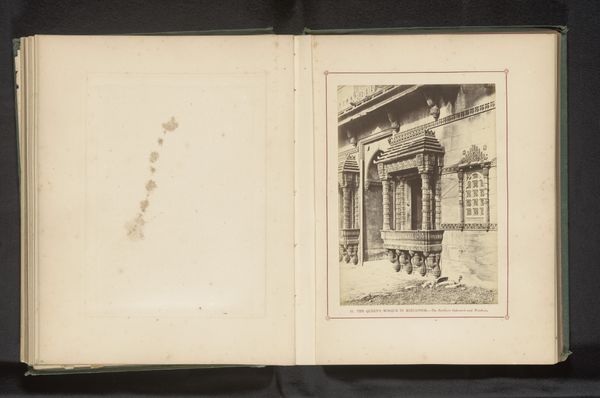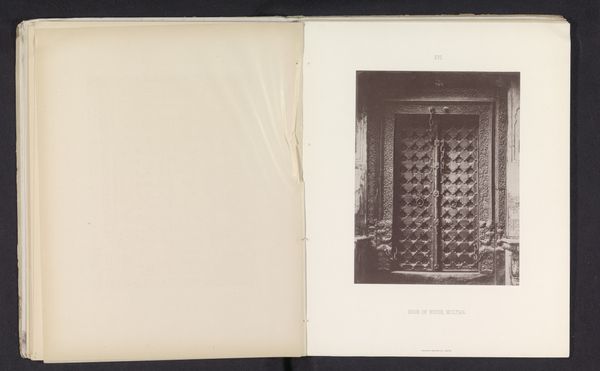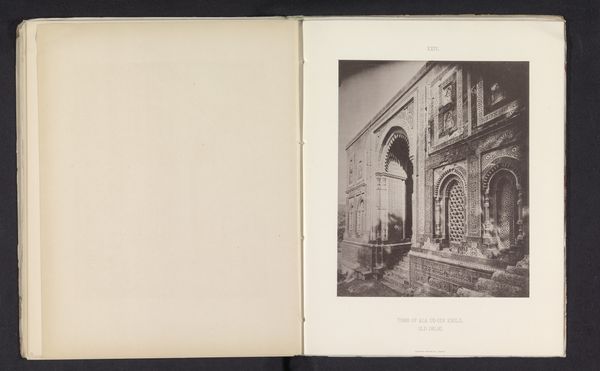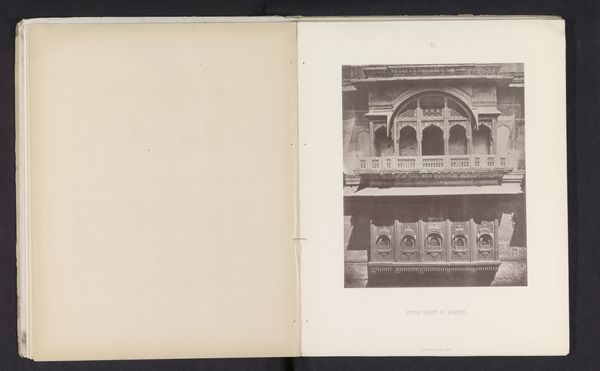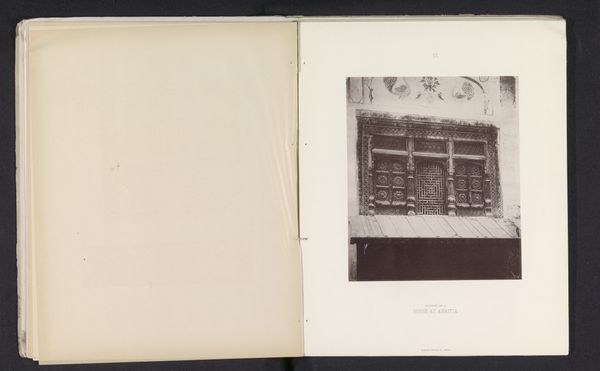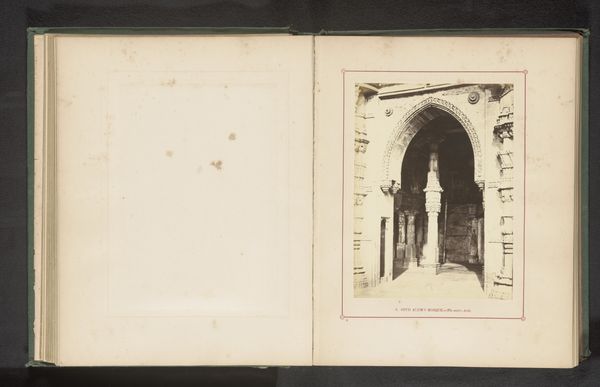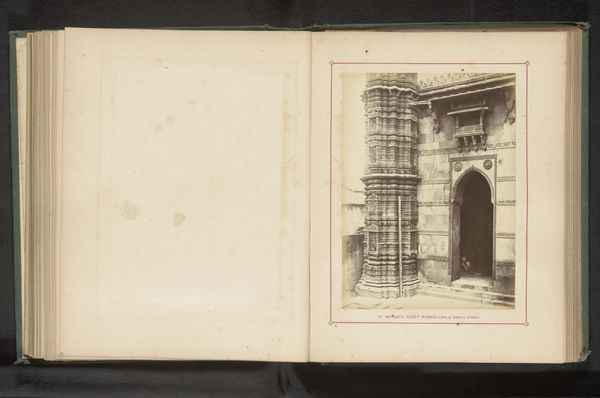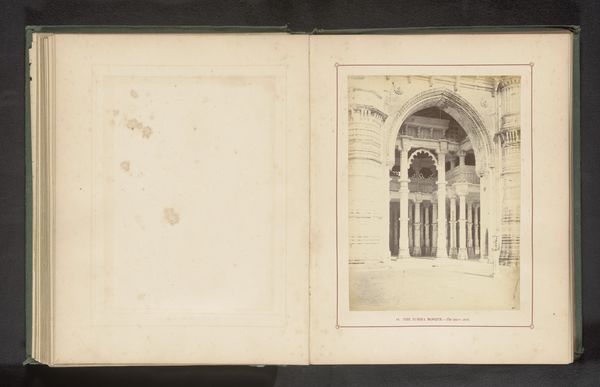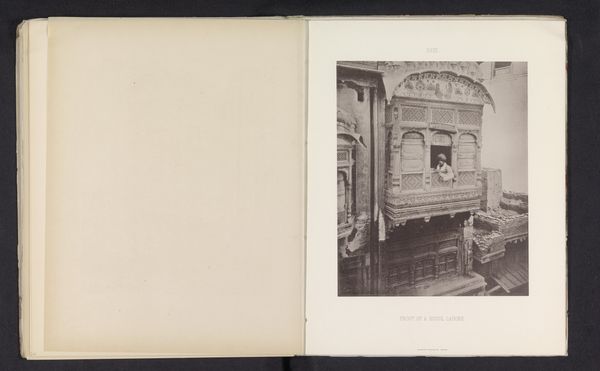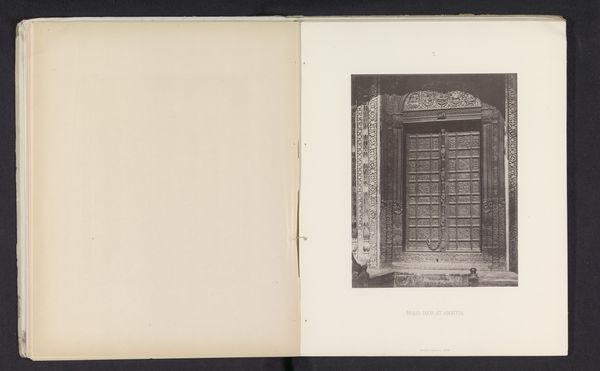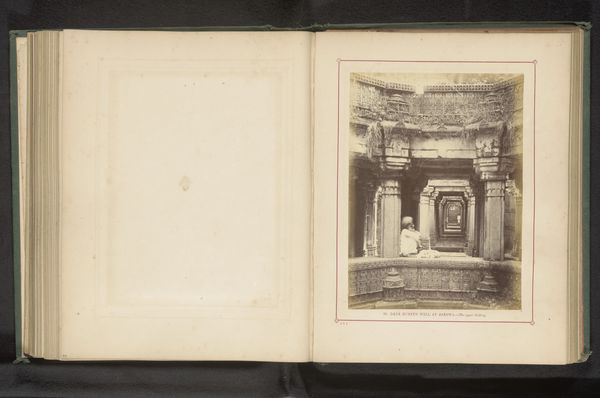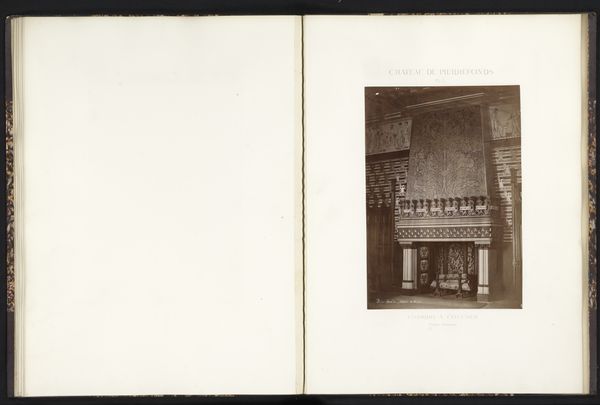
print, photography, architecture
# print
#
asian-art
#
landscape
#
photography
#
ancient-mediterranean
#
architecture
Dimensions: height 214 mm, width 170 mm
Copyright: Rijks Museum: Open Domain
Curator: We're looking at a fascinating photographic print today titled "Gezicht op een portiek van een huis in Multan," or "View of a portico of a house in Multan," dating back to before 1885. Editor: Immediately, I'm struck by the geometric precision, almost dizzying, of the archway’s carved decorations. The light and shadow interplay creates such a depth that emphasizes the ornate nature of the entryway. Curator: It’s believed that photography, especially architectural photography of this kind, served to categorize and somewhat colonize cultures. Think about it: this image offered visual information for a Western audience, contributing to their understanding—or rather, construction—of the East. What social power dynamic can be observed here, do you think? Editor: Interesting perspective, but from a purely formalist lens, notice the careful composition! The photographer directs our eye right to that elaborate central doorway through symmetry and repeating geometric patterns. The texture seems tactile. It suggests a richness not often captured in early photographs. Curator: But richness isn’t just about surface ornamentation. These structures represented more than aesthetic accomplishments; they speak to a history of trade, religious exchange, and socio-political influences. In South Asian architectural heritage, a portico is a transitional zone, a space both public and private. Who occupied these spaces and who was permitted passage are central. Editor: Certainly. The use of light plays its part here too. See how the entryway appears to be a dark void, almost like a shadow, highlighting what's unknown and possibly unknowable. Curator: True, but it's vital to remember these historical records, like any, offer an incomplete viewpoint. By delving into the historical narratives entwined with architecture like this, we unearth broader questions about cultural representation and agency. Whose history gets to be told? Who is seen—or, in this instance, framed—and how? Editor: Absolutely. So, we've gone from discussing visual structure, straight through to post-colonial critique, to close the frame once again—to consider who made this striking image in the first place! Curator: Yes, reflecting on the artist's identity could deepen our contextual awareness even further, while considering contemporary readings adds vital relevance to appreciating and honoring it today.
Comments
No comments
Be the first to comment and join the conversation on the ultimate creative platform.

